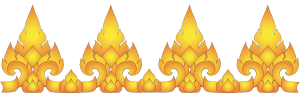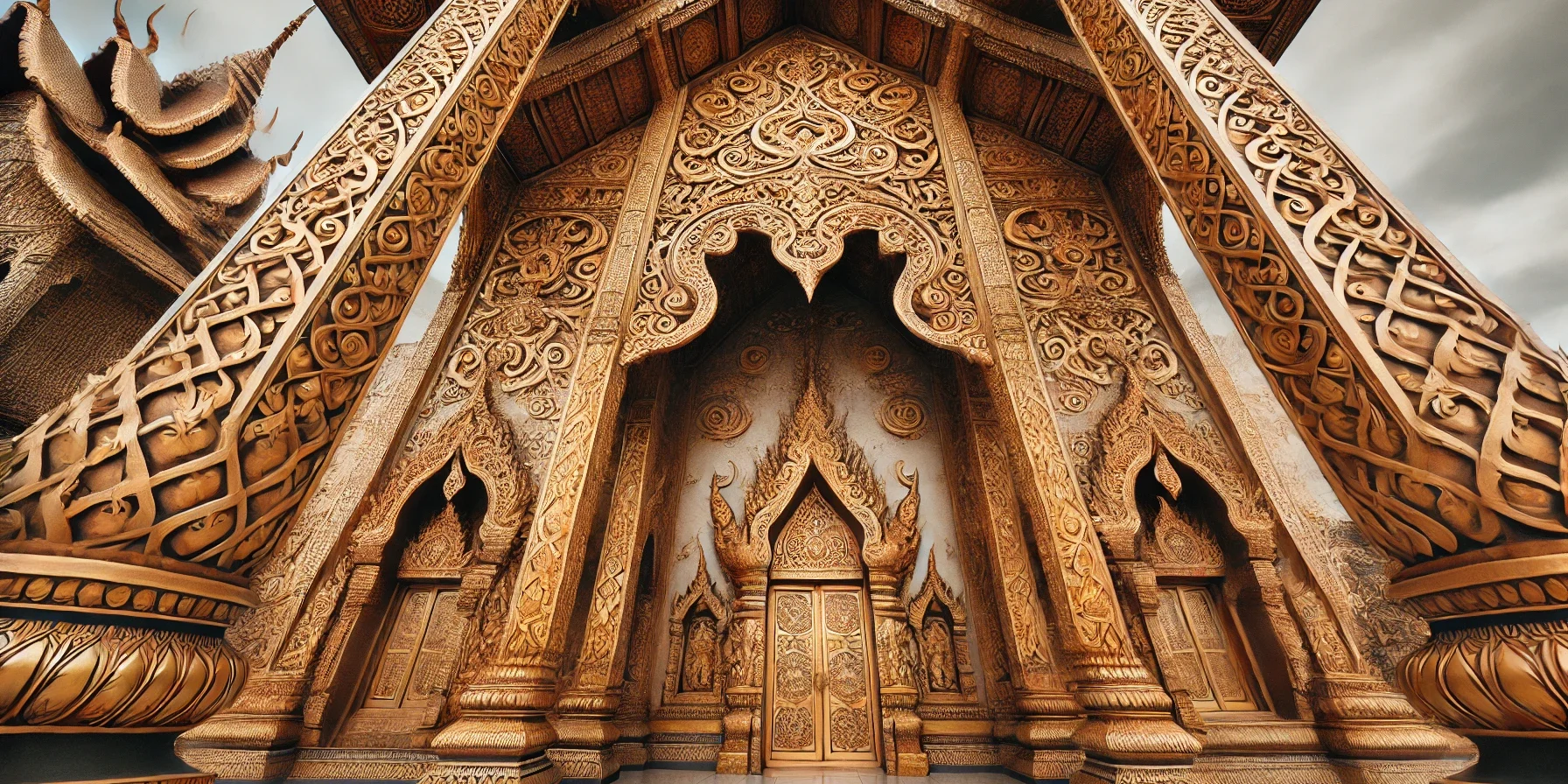The Timeless Beauty of Krajang
The Story Behind Thailand’s Ornamental Pattern
In the intricate world of Thai art and architecture, “Krajang” (กระจัง) is one of the most distinctive and revered ornamental patterns. You may have seen it embellishing temple doorways, gilded palace walls, or the delicate carvings of wooden panels. But have you ever wondered where this mesmerizing design originated?
The story of the Krajang pattern is one that weaves through history, spirituality, and artistic evolution, with its roots deeply embedded in both nature and ancient civilizations.
A Pattern Inspired by Nature
Like many traditional Thai motifs, Krajang was born from an observation of nature. It is believed to have been inspired by the forms of flowers and leaves, particularly the lotus flower—a sacred symbol in Buddhism.
Imagine a lotus petal unfolding gracefully in the morning sun. Its curves are gentle yet symmetrical, embodying balance and beauty. Thai artisans, in their pursuit of harmony, translated this natural elegance into patterns that would later define the aesthetics of Thai temples, textiles, and even jewelry.
Echoes of Ancient Civilizations
The origins of Krajang, however, extend beyond Thailand’s borders. Historical evidence suggests that this pattern was influenced by the artistic traditions of India and the Khmer Empire (modern-day Cambodia).
From India:
Many elements in Thai decorative arts can be traced back to Indian influences, brought over through trade and the spread of Buddhism. The intricate floral designs seen in ancient Indian temples share a striking resemblance to Krajang patterns, particularly in their repetitive, symmetrical style.From the Khmer Empire:
The grandeur of Angkor Wat, one of the most famous temple complexes in the world, showcases elaborate carvings that bear a strong resemblance to Krajang. These Khmer motifs, often found in temple reliefs and stone engravings, were later adapted into Thai architecture, evolving into uniquely Thai forms.
By the time these influences merged with local Thai artistic traditions, Krajang had transformed into a symbol of elegance and divine protection, gracing the entrances of sacred places.
Types of Krajang Patterns
Over centuries, Thai artisans refined and categorized Krajang into different styles, each with its own significance:
- Krajang Ta-Aoy (กระจังตาอ้อย) – Resembling the sharp edges of sugarcane, this pattern features repeating triangular shapes that create a rhythmic and structured appearance.
- Krajang Ruan (กระจังรวน) – A more intricate variation, where the floral-like elements are interwoven, giving a sense of movement and fluidity.
- Krajang Patiyan (กระจังปฏิญาณ) – An elaborate, layered design often used in highly sacred spaces such as temples and royal architecture.
- Krajang Bai Thet (กระจังใบเทศ) – Inspired by the curling shapes of leaves, this pattern exudes softness and natural elegance.

Each of these variations serves not just as decoration but as a symbolic representation of protection, prosperity, and spiritual enlightenment.
More Than Just a Decorative Pattern
Beyond its visual beauty, Krajang carries deep cultural and spiritual meaning. It is often associated with:
- Sacredness – As it is predominantly used in temples and royal sites, Krajang is regarded as a motif of divine protection.
- Balance and Harmony – Its symmetrical nature mirrors the Buddhist concept of balance in life.
- Timeless Elegance – Despite originating centuries ago, Krajang remains a beloved artistic element, continuing to appear in modern designs, from textiles to interior décor.
A Living Legacy
Even in today’s digital age, Krajang has not faded into history. Designers and architects continue to incorporate this ancient pattern into modern-day creations, ensuring that its beauty and significance live on. Whether etched into temple walls or reimagined in contemporary design, the Krajang pattern remains a testament to the enduring brilliance of Thai artistry.
So the next time you find yourself in Thailand, wandering through the golden halls of a temple or admiring a beautifully carved wooden panel, take a moment to look closer. You might just see the echoes of nature, history, and spirituality woven into the timeless elegance of the Krajang pattern.



